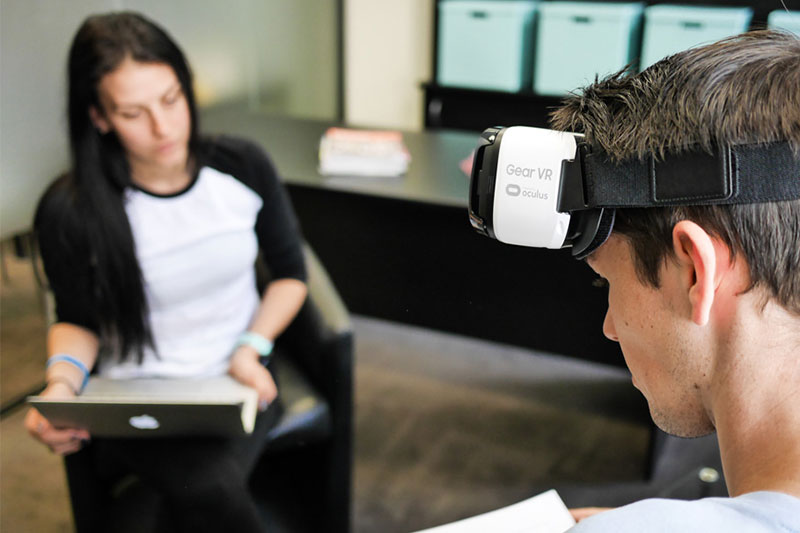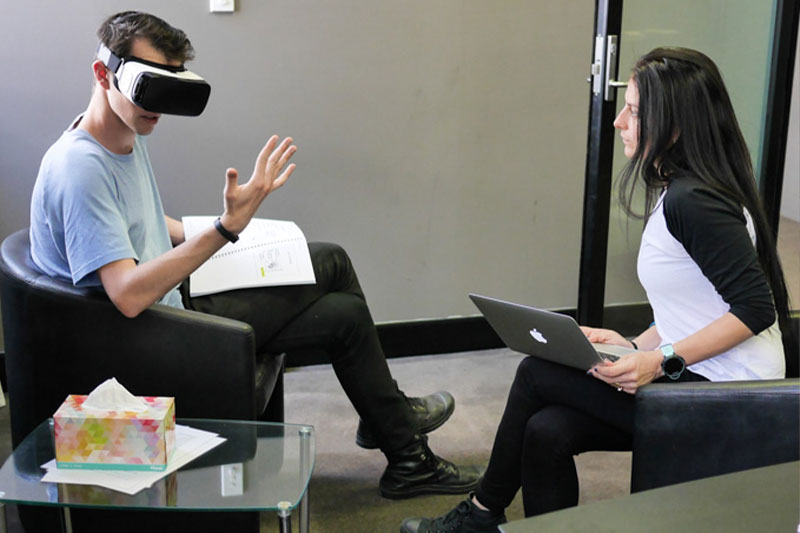At the Sydney Phobia Clinic, virtual reality-based cognitive-behavioural therapy (CBT) is giving people the tools they need to face their greatest fears.
It all began with a flight simulator and a question: ‘What if we could use virtual reality to treat phobias?’ Australian clinical psychologist Corrie Ackland, founder and Clinical Director at Sydney Phobia Clinic, has worked in severe anxiety disorders for the last seven years. Since 2016, she’s been pioneering the use of virtual reality (VR) in exposure therapy, a behaviour therapy that acclimatises someone with an anxiety disorder to a graduated hierarchy of feared situations. With a short five-week turnaround, her clinic’s programme claims to help people regain control over their phobias – from flying to blood, claustrophobia to needle phobias and more.

So, how does it work? Virtual reality exposure treatment (VRET) builds upon cognitive behavioural therapy (CBT), giving a client a safe, controlled environment to practice the coping techniques they’ve learned. “We know that VR exposure can activate the same pathways in the brain as in vivo (real-life) exposure,” Corrie explains. “So, the improvements in VR exposure situations can actually extend to real-life exposure.”
If you take a fear of flying as an example, traditional exposure therapy options might involve applying CBT strategies to a fear response induced by looking at pictures, watching videos, reading descriptions, or imagining feared situations. However, “the jump between that and then going into a real-life situation is huge for some clients,” Corrie elaborates. “Even if we were able to get an individual into a flight situation, one takeoff wouldn’t normally be enough to get improvements over time.” Virtual reality helps bridge that gap between imagination and reality, providing clients with a safe, cost-effective training environment where the situation can be moderated between levels of severity and repeated as necessary. “With VR, we’d be able to order flying events from mildly triggering up to severe. We’d start with a calm flight – just flying with nothing particular happening. Then mild turbulence and then the takeoff. We might revisit turbulence after that, which can actually increase in severity, and finally, weather events.”

At Sydney Phobia Clinic, virtual reality exposure therapy can be applied to everything from arachnophobia (fear of spiders) to emetophobia (fear of vomiting), driving phobias or public speaking anxiety. “The beauty of virtual reality is that we could get someone with quite a rare phobia and go out the next day and film some 360° video footage,” Corrie says. “We had a client with a fear of birds and we were able to go right up to those birds, get footage, and put that in virtual reality.”
Although the treatment is still relatively niche, Corrie relates that VRET is being perceived positively. “My clients overwhelmingly speak to the value that virtual reality has provided them and we get really quick results as well,” she says, explaining that their 5-week turnaround isn’t something they would usually see without virtual reality. When pressed about the lack of similar initiatives, she explains, “The general resistance in the clinical psychology field would be more from the business angle.” And, unlike other professions, psychologists have very little overheads aside from their office space, so the lack of incentive to invest in the tech is a major barrier.

Virtual reality treatments have already been developed for people with autistic spectrum disorders and Corrie believes the tech could easily translate to helping people with OCD or general social anxieties. “I think there’s a massive range of applications for VR,” she says, although she stresses that when it comes to psychological treatment, the technology still needs to be couched within a therapeutic environment. With a modern anxiety epidemic on the horizon thanks to social media’s much-documented effects, she advises people to remember to switch off from technology occasionally and maintain a healthy balance between being connected and living in the moment.
Interested in more tech initiatives that are improving mental health?
Read about The Brightly Project, a therapist chatbot that’s combating mental illness in schools.





